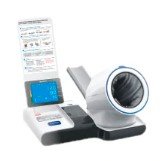Quality Control in Medical Laboratories and Phlebotomy Services: Current Standards and Best Practices
Summary
- Quality Control in medical laboratories and phlebotomy services is essential to ensure accurate results and patient safety.
- Current standards for Quality Control include regular monitoring of equipment, Proficiency Testing, and adherence to Regulations set by organizations like CLIA and CAP.
- Best practices include proper training of staff, maintaining good communication between lab departments, and implementing continuous improvement strategies.
Introduction
Quality Control in medical laboratories and phlebotomy services plays a crucial role in ensuring accurate Test Results and patient safety. With advances in technology and increasing demand for healthcare services, it is more important than ever to adhere to the current standards and best practices for Quality Control in these settings. In this article, we will explore the current standards and best practices for Quality Control in medical laboratories and phlebotomy services in the United States.
Current Standards for Quality Control
There are several key standards that medical laboratories and phlebotomy services must adhere to in order to maintain Quality Control. These standards are put in place to ensure that tests are performed accurately and reliably, and that patient samples are handled properly. Some of the current standards for Quality Control in the United States include:
Regulations from CLIA and CAP
The Clinical Laboratory Improvement Amendments (CLIA) and the College of American Pathologists (CAP) are two organizations that set Regulations and guidelines for laboratories in the United States. These Regulations cover a wide range of topics, including personnel qualifications, equipment maintenance, and testing procedures. Laboratories must follow these Regulations to maintain accreditation and ensure the quality of their services.
Proficiency Testing
Proficiency Testing is a crucial component of Quality Control in medical laboratories. This process involves sending samples to an external agency for testing to ensure that the laboratory's results are accurate and reliable. Laboratories must participate in Proficiency Testing programs regularly to demonstrate their competence and compliance with industry standards.
Equipment Monitoring
Regular monitoring of equipment is essential to maintain Quality Control in medical laboratories. This includes calibrating instruments, performing maintenance checks, and ensuring that equipment is functioning properly. Laboratories must have procedures in place to monitor their equipment and take corrective action when necessary to prevent errors and ensure accurate results.
Best Practices for Quality Control
In addition to following the current standards for Quality Control, there are several best practices that medical laboratories and phlebotomy services can implement to improve the quality of their services. These best practices include:
Proper Training of Staff
One of the most important best practices for Quality Control is to ensure that staff are properly trained and competent in their roles. This includes providing ongoing education and Training Opportunities, as well as implementing regular competency assessments to ensure that staff have the skills and knowledge needed to perform their jobs effectively.
Communication and Collaboration
Good communication between different departments within the laboratory is essential for maintaining Quality Control. This includes sharing information about Test Results, patient samples, and any issues that may arise during testing. Collaboration between departments can help to identify and address problems quickly, leading to improved patient care and more accurate results.
Continuous Improvement
Implementing a culture of continuous improvement is another best practice for Quality Control in medical laboratories and phlebotomy services. This involves regularly reviewing processes, identifying areas for improvement, and implementing changes to enhance the quality of services. By continually striving to improve, laboratories can ensure that they are providing the best possible care for their patients.
Conclusion
Quality Control in medical laboratories and phlebotomy services is essential for ensuring accurate Test Results and patient safety. By following the current standards and implementing best practices for Quality Control, laboratories can maintain the quality of their services and provide the best possible care for their patients. It is important for laboratories to stay up to date on Regulations set by organizations like CLIA and CAP, participate in Proficiency Testing programs, and implement continuous improvement strategies to enhance the quality of their services.

Disclaimer: The content provided on this blog is for informational purposes only, reflecting the personal opinions and insights of the author(s) on the topics. The information provided should not be used for diagnosing or treating a health problem or disease, and those seeking personal medical advice should consult with a licensed physician. Always seek the advice of your doctor or other qualified health provider regarding a medical condition. Never disregard professional medical advice or delay in seeking it because of something you have read on this website. If you think you may have a medical emergency, call 911 or go to the nearest emergency room immediately. No physician-patient relationship is created by this web site or its use. No contributors to this web site make any representations, express or implied, with respect to the information provided herein or to its use. While we strive to share accurate and up-to-date information, we cannot guarantee the completeness, reliability, or accuracy of the content. The blog may also include links to external websites and resources for the convenience of our readers. Please note that linking to other sites does not imply endorsement of their content, practices, or services by us. Readers should use their discretion and judgment while exploring any external links and resources mentioned on this blog.
